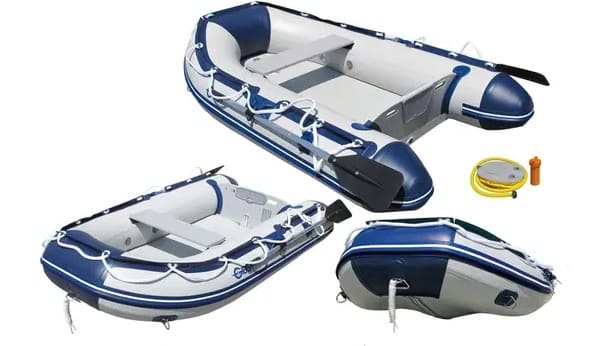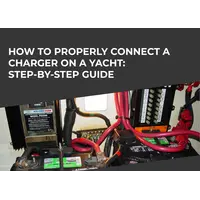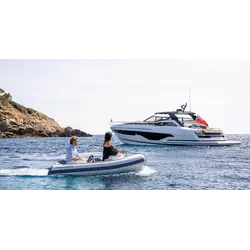How do you store your rubber dinghy? Do you just roll it up and take it out to the balcony before the onset of heat? Then do not be surprised if after a season or two the seams begin to leak, and cracks appear on the hull of the boat. Do you want to avoid it? The article will help extend the life of your vessel for years.
The garage is a versatile storeroom. There you can store almost any item that has no place in the apartment. One of these things is an inflatable dinghy. After all, most owners store it in this way - they roll it up, cover it and put it in the garage until spring.
Imagine how you will get the boat out in a few months. Just imagine: in a cold garage lies a rolled-up boat with a huge amount of bends. When heat sets in, you take it out, lay it out and see not only cracks on the body, but also the fact that it turned out to be perforated - these are mouse bites. After all, a boat rolled up in several layers, smelling of fish, is just a layer cake for a host of mice. And it is unlikely that you will be able to repair it - you will have to shell out a certain amount to purchase a new one.
What to do, you ask, so that the inflatable vessel is not damaged by rodents in the first year and does not deteriorate due to kinks? First of all, observe the conditions for preparing and storing the boat. And which exactly - we will tell further.

Washing and Drying the Dinghy
Processing the outer surface
First of all, of course, the boat must be thoroughly washed.
- Slightly deflate the cylinders, and also disassemble the floor of the boat (aluminum, wood or inflatable).
- Wash the entire boat thoroughly with soapy water and a soft sponge. Especially carefully remove algae, mud, and stuck pieces of fish. You need to do this so that the mice are not interested in your boat. Be sure to remove all abrasive substances such as sand. If you wash the boat negligently, then prolonged exposure to hard grains of sand can scratch the top layer of the material.
Remember! It is strictly forbidden to use gasoline and alcohol-containing substances to clean the boat from stains and various contaminants.
Expert advice
It is better to clean and wash the boat outdoors in sunny weather and with a light breeze - this will help it dry out in a shorter time. It is better to set the boat at a slight angle to the surface - then the water will drain faster.
Leave the boat tilted. It is recommended to turn it from one side to another from time to time - this will speed up the drying process. If you find a damp place, then it is better to wipe it with a cloth.
Cleaning the inner surface
So, the top surface is dry. Now special attention should be paid to the inner surface of the boat, namely, to the place where the sides and the bottom meet.
- Remove all air from the boat and turn it upside down. Carefully inspect the joints of the sides and bottom. Clean them with soapy water and dry gently with a cloth.
- Be sure to treat both the outer and inner surfaces with talcum powder: take a dry rag, dip it into the powder and treat the entire material of the boat. Next, pour some of the talc into the cylinders and shake the boat a little so that the powder is evenly distributed over the entire surface. Why is this needed? It's simple: talc perfectly protects the rubber from the negative effects of moisture, and also eliminates sticking of the fabric.
How to Properly Store a Rubber Boat?
After you have cleaned the boat, you need to properly lay it down for the wintering period. Let's take a closer look at how this should be done.
Choose a place where it will be stored. Of course, the ideal option is to store the boat inflated in a warm room. But such conditions are rare. Therefore, the most popular way is to keep it folded into a bag, in an apartment under the bed, in a closet, on the mezzanine.
How to Fold the Dinghy in the Bag?
It is imperative to avoid sharp corners and bends, since after a long stay in this state, a crack will occur in the bend in the future. It is for this purpose that you need to pump up the boat a little - then you will be able to avoid unwanted kinks in the product.
Important! Several times during the entire storage period, you will need to get and pump up the boat so that all possible folds and bends are smoothed out. After that, it is necessary to lower it again, leaving a little air, and fold it again. Make sure that new folds and bends do not coincide with the previous ones!
A Few Nuances in the Process of Storing an Inflatable Boat
In addition to properly cleaning and folding the boat, you need to maintain the conditions in which the boat is stored.
- Near the place where the boat lies, there should be no radiators, heating electrical appliances, as well as chemically active reagents: gasoline, alcohol, acetone, various acids. They quickly destroy any of the most durable fabric of the boat.
- The temperature should be positive, preferably up to 25 °C, but not lower than 0 °C.
- Exclude regular exposure to sunlight - they will lead to the rapid destruction of the material.
- The permissible humidity range is from 30 to 8%.
Remember! If you brought the boat into a warm place after a long period of storage at sub-zero temperatures, it is strictly forbidden to lay it out immediately! Wait for the material to reach ambient temperature before unrolling it. The thing is that the materials of PVC inflatable boats become brittle in the cold and break when you try to change their shape.
How to Store Dinghy Accessories
Do not forget about such useful things as oars, a pump and even a motor for an inflatable boat. They also require gentle care if you want them to last long and trouble-free.
The oars, seats, pump are washed and cleaned of dirt very thoroughly with soapy water. After that, they are placed in storage. Pay special attention to the pump hose - it must be kept straight without bends or breaks.
Preservation of the motor for an inflatable boat is carried out in the same way as long-term storage of a conventional gasoline engine.
We hope that the described rules for the preparation and storage of an inflatable boat will help you keep it for many years. If, for some reason, the vessel has nevertheless become unusable, then we advise you to buy a new inflatable boat and properly store it, taking into account the information received. Call the phone number above. You will be answered by a specialist who will help you choose a model that meets your requirements and at an attractive price for you.








